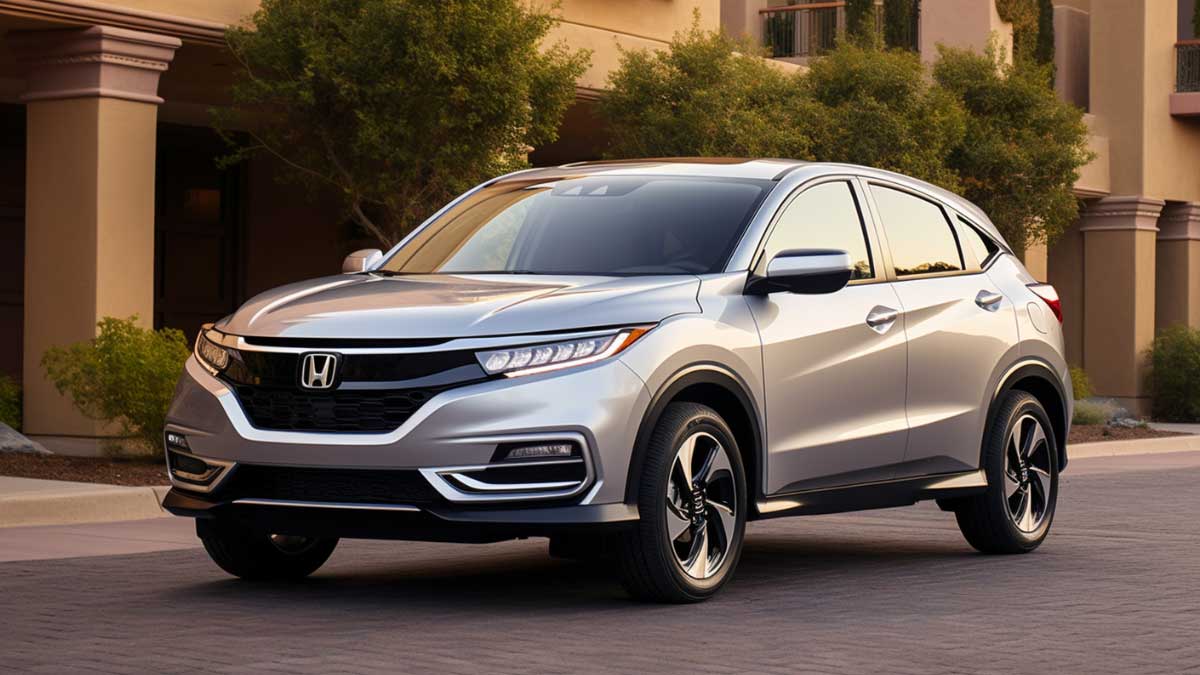What Is Considered Low and High Oil Pressure? And How to Deal With It?
The term oil pressure generally refers to the internal pressure of the engine oil in your car or truck. There is a standard pressure range for each type of motor vehicle. The exact range may differ based on the car model or brand.
So, what is considered low and high oil pressure? The normal oil pressure ranges from 25 psi to 65 psi. So, anything under 25 psi is considered low oil pressure. If the oil pressure is over 65 psi, it is considered high oil pressure.
Low and high oil pressures can cause a myriad of problems. Let’s learn the causes of low and high oil pressure, their symptoms, and how to solve it.
What Is Oil Pressure?
Engines need some form of lubrication to work properly. The engine oil lubricates the components to reduce friction and ensure the smooth working of the engine.
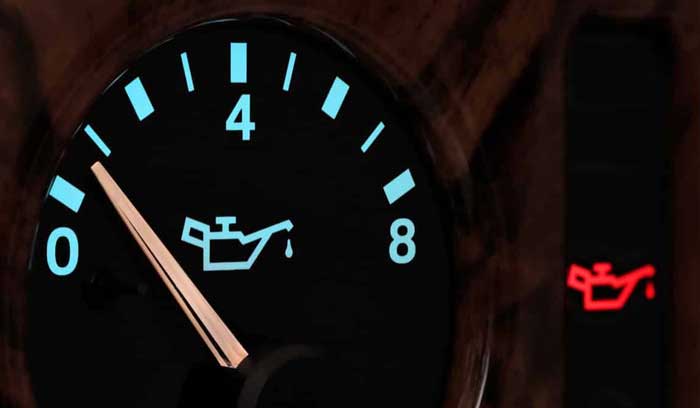
It is kept in an enclosed system under pressure. Depending on car types, models, and brands, the oil pressure can range from 25 psi to 65 psi.
When the engine is running, the oil becomes hotter. Temperature change causes the oil pressure to change. So, the oil pressure in a cool engine and a hot engine will be different. However, it should be within the operating range. Otherwise, the engine might not work properly and face severe damage.
What Is Considered Low and High Oil Pressure?
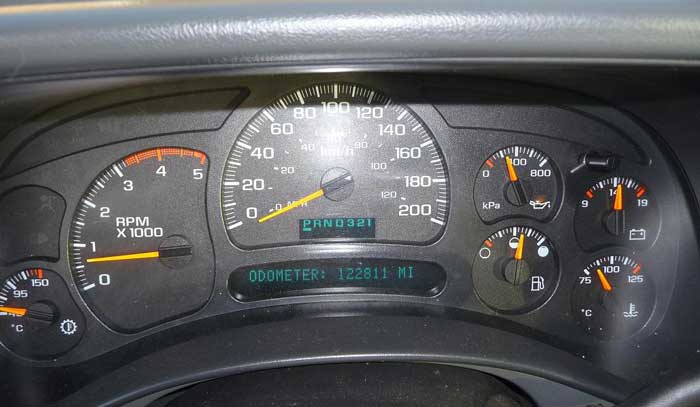
Under normal pressure, the engine oil can flow through the engine channels easily and lubricate all the necessary components. When the pressure goes above 65 psi, it obstructs the flow of engine oil. As a result, the engine components may face more wear and tear.
Low oil pressure is when the engine doesn’t have enough oil to fill the channels. In this case, the quantity of oil pumped into the engine isn’t sufficient to reach all the components. If the oil pressure falls below 25 psi, the engine is considered to have a low oil pressure.
What Causes Low and High Oil Pressure?
Understanding the reasons behind low and high oil pressure is essential to avoid such incidents. Here is a detailed breakdown of the reasons.
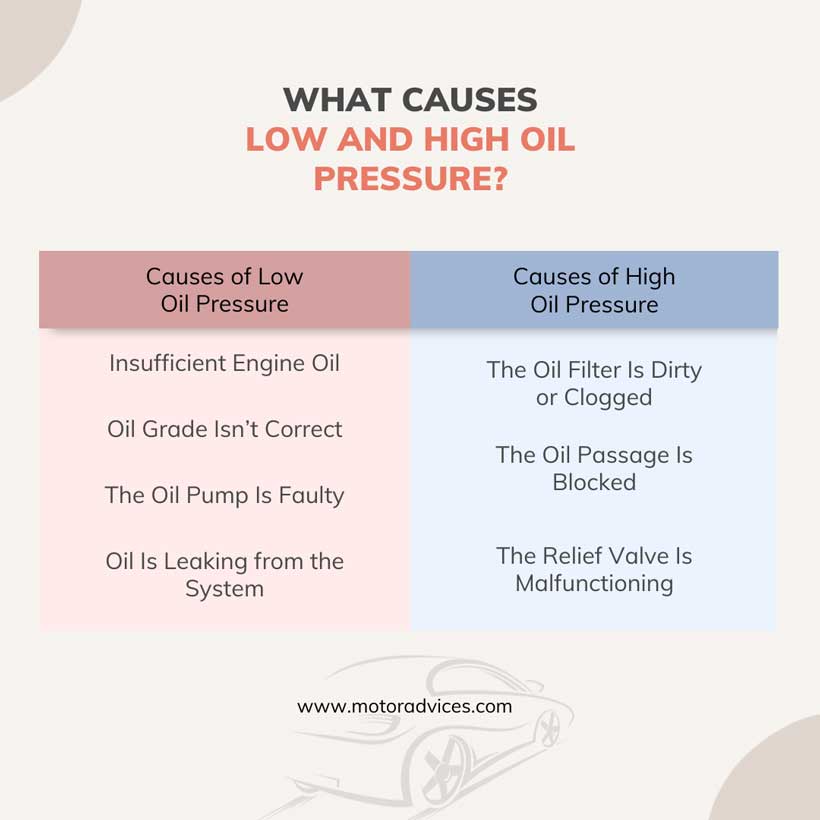
Causes of Low Oil Pressure
When the low oil pressure light comes up on the dashboard, you should look for the following reasons.
- Insufficient Engine Oil
Each engine needs a certain amount of engine oil to run properly. For example, regular cars need about 4-7 liters of engine oil. While running, the engine can consume a varying amount of oil depending on its condition, age, etc. Older engines consume more oil than newer engines.
Some of the oil may also leak if the seals or gaskets are bad and piston rings are worn. So, the oil level may drop over time. This causes the system to detect a low oil pressure.
- Oil Grade Isn’t Correct
Engine oils come in different SAE grades. Different engines require engine oils of different grades. The engine oil grade determines the cold and hot viscosity of the oil. If the viscosity of the engine oil is low, it will have less resistance. So, the pressure sensor can detect the oil pressure as low.
Higher viscosity than required can also be a problem. Due to a higher viscosity, the engine oil may not flow through the system properly. The lack of oil in some parts of the system will also be detected as a low oil pressure.
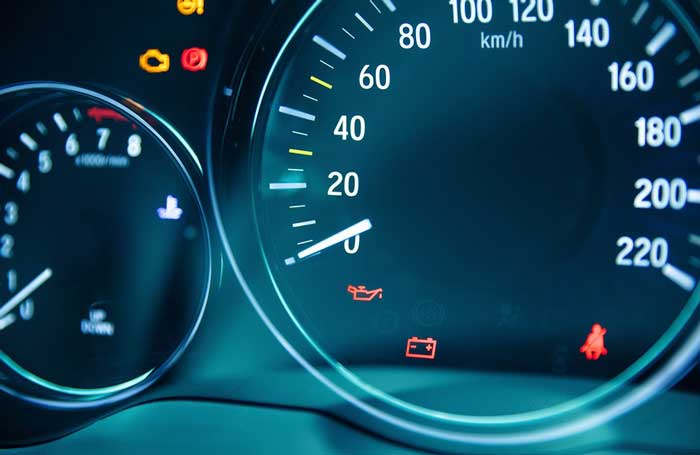
- The Oil Pump Is Faulty
An oil pump is responsible for generating the necessary pressure to push the oil through the system. If the pump can’t generate enough pressure, the oil pressure throughout the system will be lower than normal.
Broken pump seals or worn pumps normally cause this problem.
- Oil Is Leaking from the System
As I have already mentioned, engine oil flows through an enclosed system. Oil lines may develop leaks over time, especially if the engine is too old. In such cases, oil will leak from the system and reduce the overall oil level.
So, the oil pressure inside the system will drop. Air bubbles can also enter the system through leaks, which alters the original oil pressure.
Causes of High Oil Pressure
Here are the reasons for high oil pressure in engines.
- The Oil Filter Is Dirty or Clogged
Depending on the engine oil grade, driving conditions, etc., the engine oil filter can last for about 3,000-5,000 miles. After this period, you need to change the oil filter. If the oil filter is at the end of its service life, there can be dirt on the filter.
The dirt or debris accumulated on the filter restricts the oil flow. As a result, the oil pressure can become high on one end of the filter and low on the other end.
- The Oil Passage Is Blocked
Oil passages inside the engine are like arteries in our bodies. They are pretty narrow, considering the overall amount of oil flowing through them. So, the oil normally flows under a certain pressure.
Over time, sludge or debris in the engine oil can accumulate inside the oil passage. As a result, the oil flow inside the passage is obstructed. This obstruction increases the oil pressure.
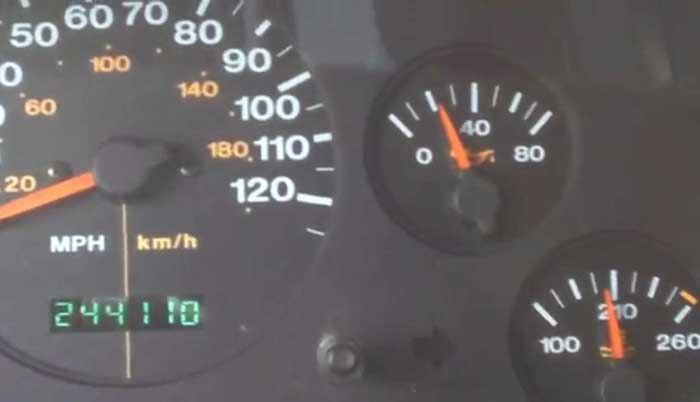
- The Relief Valve Is Malfunctioning
It is also known as the oil pressure relief valve. This simple mechanism allows or blocks oil flow through the engine passage depending on the pressure. For example, when the pressure is high, the valve opens to allow the oil to flow and reduce the pressure.
If the valve is stuck closed, it won’t open properly, and the oil can’t flow through the passage. As a result, the oil pressure will be higher than normal.
Signs of Low and High Oil Pressure

Check these symptoms of low and high oil pressure to detect the problem earlier.
Low Oil Pressure Symptoms
When your vehicle has a low oil pressure, you will notice the following symptoms.
- The oil pressure gauge on the dashboard will be on the left or lower than normal.
- All engine components won’t get enough lubrication, so there will be grinding noises from the engine.
- The oil level will drop in the reservoir. If it goes below the Low or Min mark, it means the oil pressure in the system is low.
- Due to more friction between engine components, the engine will start overheating.
High Oil Pressure Symptoms
These are the signs of high oil pressure in your engine.
- Oil leaks may be visible in the engine bay or underneath the car. Small puddles of oil may occur.
- You will get the smell of burning oil from the engine. It is because the oil leaked inside the engine may enter the combustion chamber.
- The smoke from the exhaust will be darker than normal and contain soot.
- The engine will lose power gradually if the oil pressure rises. Besides, there can be sputtering sounds from the engine.
How to Fix Low and High Oil Pressure?
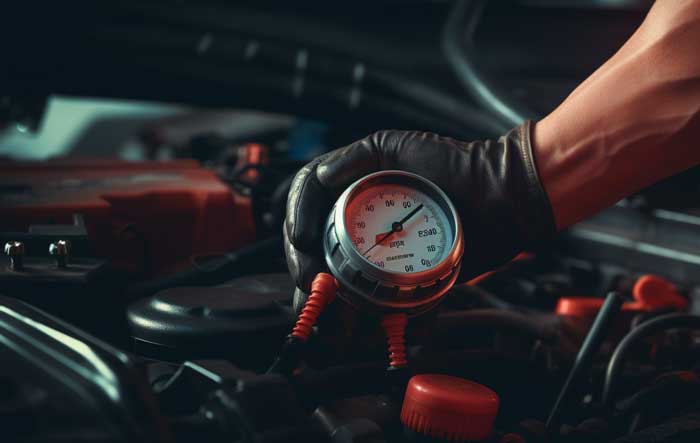
Right after noticing a change in the oil pressure, you should pull the car over and turn the engine off. Then, take the following steps.
- Step 1: Take the dipstick out and wipe it with a cloth. Then, insert it again and pull it out. Check the oil level. If the level is below the Min or Low mark, the vehicle may have a low oil pressure. Top the oil off.
- Step 2: Observe the color of the engine oil on the dipstick. If it is too dark, too much sludge can cause a higher pressure. Change the oil.
- Step 3: Check the vehicle’s manual and use the right grade of engine oil.
- Step 4: Remove the oil filter and clean it if it is slightly dirty. If it is clogged, change it.
- Step 5: Take the car to a repair shop and get the oil pump, pressure sensor, etc., checked.
FAQs
You should also read the following answers to some common questions.
You can say so. The oil pressure at idle is lower than the operating pressure. But it should be around 25 to 30 psi at idle. Less than 20 psi is considered low oil pressure.
When the engine works at a higher load, it may consume more oil. The oil pump will deliver more oil, and the oil pressure can rise.
No. You should solve the reasons for low pressure first. Then, use the thicker or thinner oil based on the weather. In hot weather, thicker oil is recommended.
Conclusion
Oil pressure is a crucial parameter for any engine. As long as the pressure is within the normal operating range, the engine will run smoothly. But, low or high oil pressure can hamper the performance.
So, what is considered low and high oil pressure? Anything below 25 psi is a low oil pressure, and over 65 psi is a high oil pressure. When the pressure is too low or high, you should assess the reasons and take the necessary steps.

